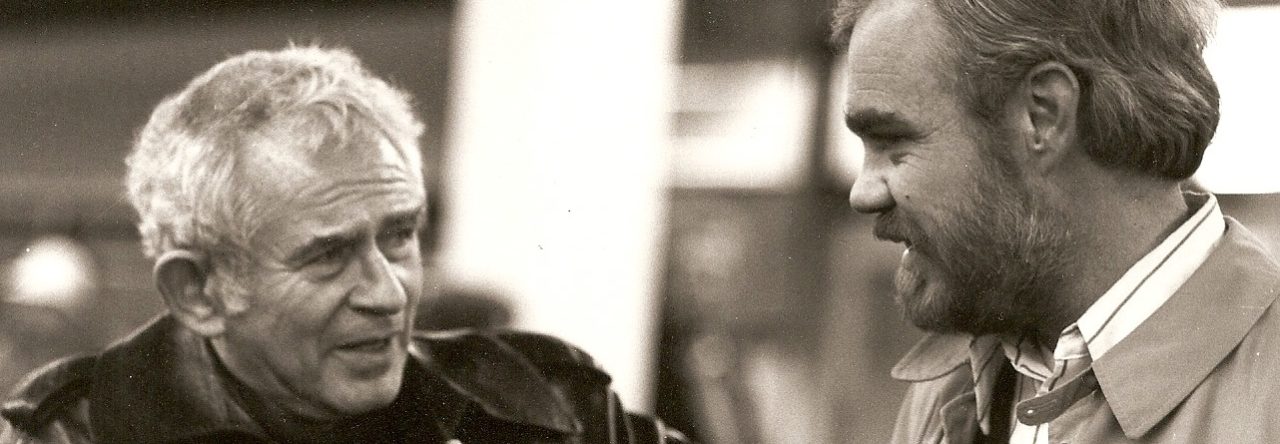Norman Mailer: A Double Life updated with the table of contents.
John Buffalo Mailer recently appeared on Huffpost Live, discussing topics ranging from his new film Hello Herman to The Game of Thrones. Congratulations, John, on a great job.
DID YOU KNOW? In 1946 when Mailer was writing The Naked and the Dead, he lived for a time with his parents at 102 Pierrepont Street, a brownstone apartment building in Brooklyn Heights. Arthur Miller lived in the same building where he was writing Death of a Salesman. When Miller and Mailer would bump into each other and chat at the mailbox, Mailer recalled, “We would talk and then we’d go away, and I know he was thinking what I was, which was, ‘That other guy is never going to amount to anything.’”
. . . But the rest of the session raised some serious issues about keeping the proper distance with a subject who was a part of your life, as J. Michael Lennon dealt with before starting a biography of Norman Mailer. Lennon knew the writer for decades and became friendly with his children. He was even included in some of the letters Mailer wrote, and which Lennon edited and used as sources for his book. In his case, Lennon became a character in the story at times, and he wrestled with how much of himself to include, finally coming to the conclusion, “You can’t leave yourself out of certain junctures” when the biographer’s life overlaps with the subjects.
Excerpt from a review, “Norman Mailer Ponders Picasso,” Wilkes-Barre Times-Leader, 11-5-95.
Norman Mailer is not simply a novelist. He is also a talented biographer. While he might protest this identification, it is indisputable that writing about brilliant, tortured, divided historical figures wrestling with their destiny at the crossroads of identity has been one of the defining passions of his writing career, beginning with The Naked and the Dead in 1948. Of his twenty-nine major books, only eight are novels, but he has written biographical studies of Muhammad Ali, Marilyn Monroe, D. H. Lawrence, Gary Gilmore, Henry Miller, Richard Nixon, John F. Kennedy, Jacqueline Kennedy, Lee Harvey Oswald and several others.
Mailer shares with Shakespeare the belief that inherited ability and character are reshaped by will, daring, extraordinary effort and—most important—choice. Circumstance is secondary, a mere scaffolding or framework for bold ventures. The thesis of this “interpretive biography,” which covers the first third of Picasso’s life, is that he was a self-created artist who “gambled on his ability to reach into mysteries of existence that no one else had perceived.” Without referring to himself, Mailer uses his own 50 years of artistic success, failure and experimentation to measure Picasso’s career from birth. . . . Mailer’s roller coaster career, while certainly different than Picasso’s, parallels the painter’s in several important ways. Both artists became celebrated in their 20s, suffered various personal and artistic reverses in their 30s, had a number of wives and lovers, and became internationally famous before reaching middle age. . . . Mailer’s interpretation of Picasso’s life vibrates with fellow feeling. Picasso was “doomed,” he says, “to relive his obsessions through all ninety-one years of his life,” and to continue to paint until the end “as if work itself could hold death off.” Mailer at 72 is still writing furiously.
This comradely biography is a brilliant investigation of the spiral of Picasso’s life and art. It gives a richer sense of the mysteries of this double helix than the more exhaustive biographies available. Set a thief to catch a thief.
Hello Herman, a film about high-school violence and penned by John Buffalo Mailer, opens this this Friday, June 7th, in theaters in fifteen cities, on demand, and on iTunes everywhere.
DID YOU KNOW? Mailer’s first appearance in a book was the publication of his novella A Calculus at Heaven, in a 1944 anthology, Cross-Section: A Collection of New American Writing, where it appeared with selections by Richard Wright, Arthur Miller, Jane Bowles, Shirley Jackson and Ralph Ellison. His second book appearance was the reprinting of his college short story, “The Greatest Thing in the World,” in a paperback collection of suspense thrillers, Hold Your Breath, edited by Alfred Hitchcock, published on October 5, 1947.

